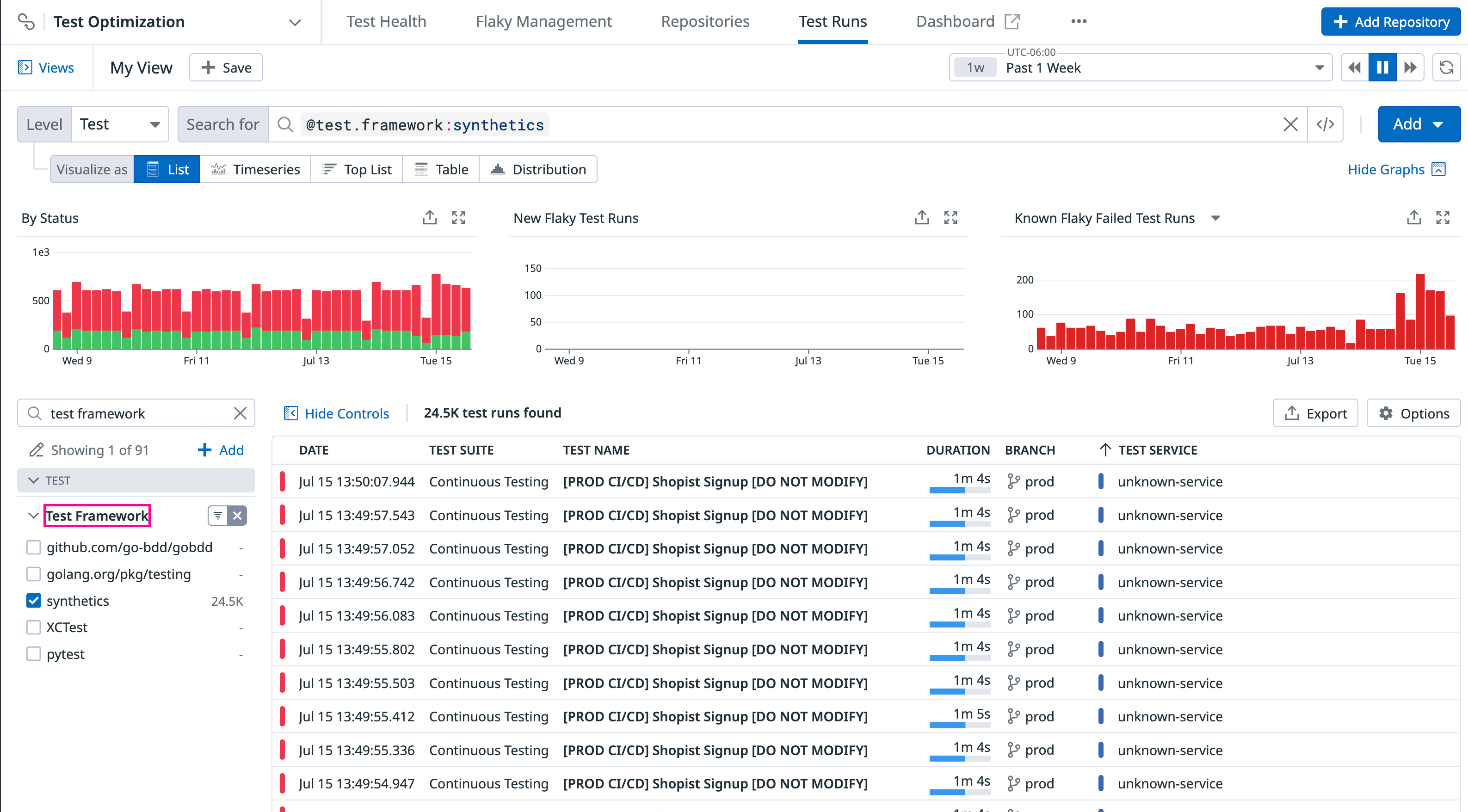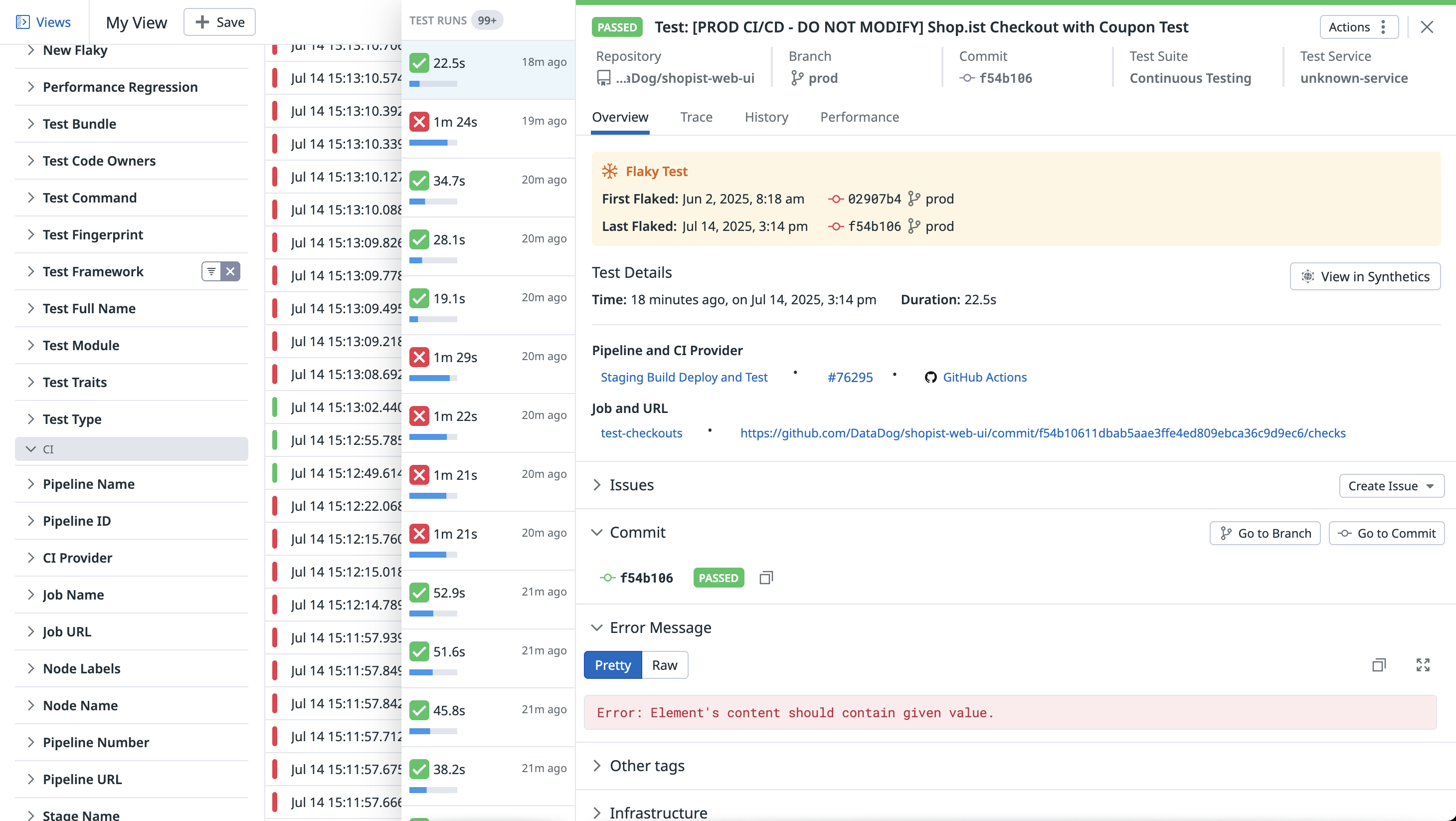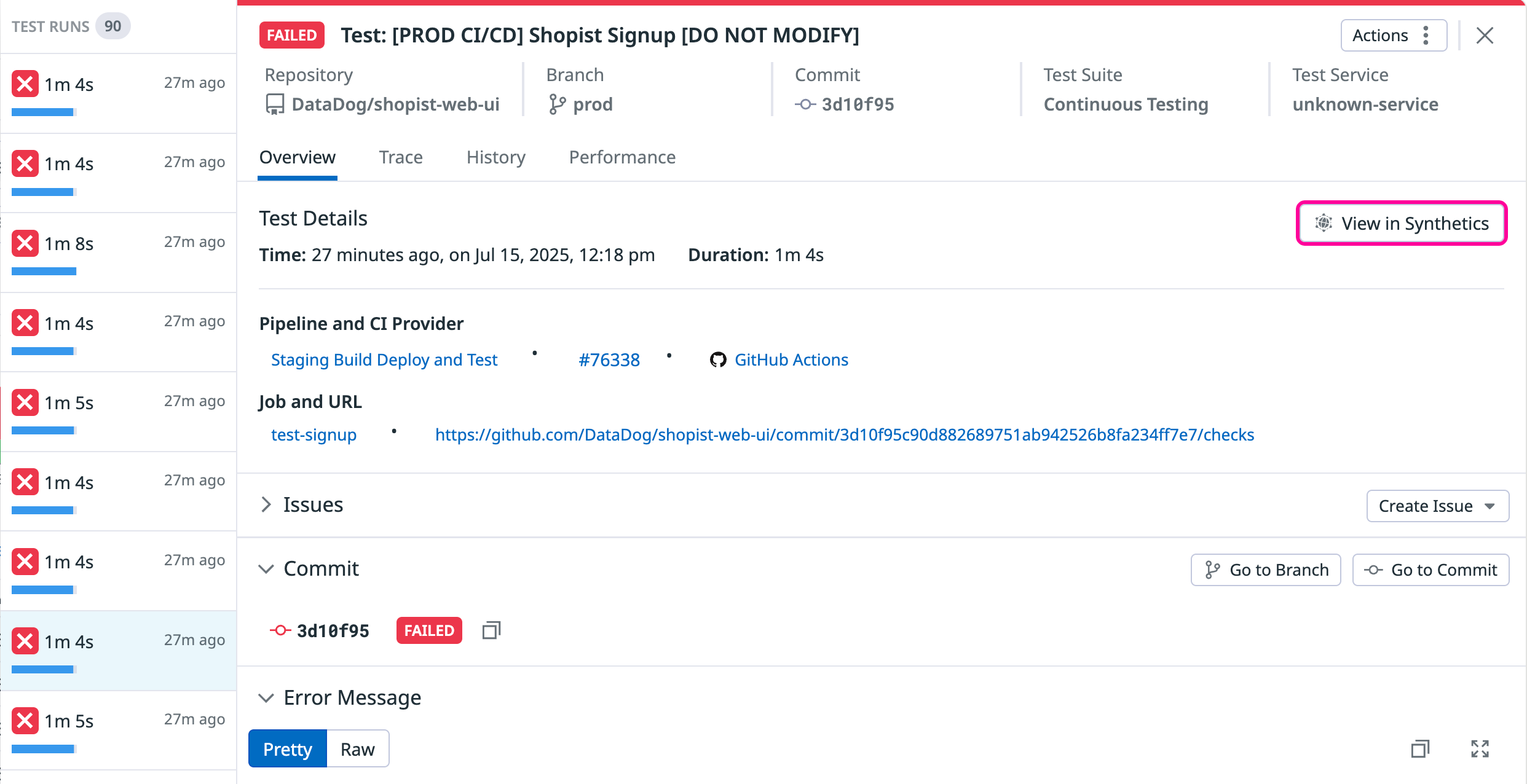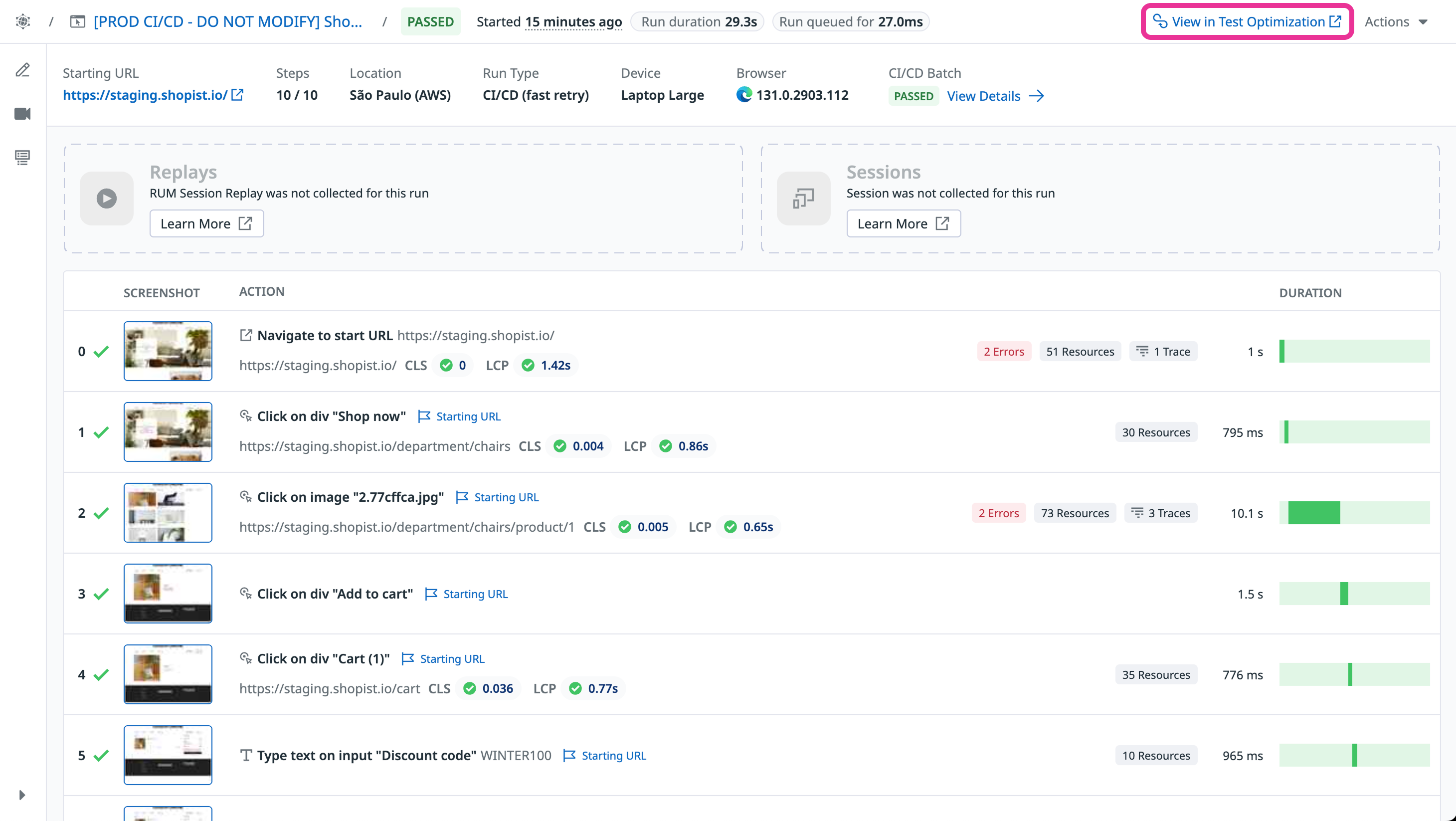- 重要な情報
- はじめに
- 用語集
- Standard Attributes
- ガイド
- インテグレーション
- エージェント
- OpenTelemetry
- 開発者
- Administrator's Guide
- API
- Partners
- DDSQL Reference
- モバイルアプリケーション
- CoScreen
- CoTerm
- Remote Configuration
- Cloudcraft
- アプリ内
- ダッシュボード
- ノートブック
- DDSQL Editor
- Reference Tables
- Sheets
- Watchdog
- アラート設定
- メトリクス
- Bits AI
- Internal Developer Portal
- Error Tracking
- Change Tracking
- Service Management
- Actions & Remediations
- インフラストラクチャー
- Cloudcraft
- Resource Catalog
- ユニバーサル サービス モニタリング
- Hosts
- コンテナ
- Processes
- サーバーレス
- ネットワークモニタリング
- Cloud Cost
- アプリケーションパフォーマンス
- APM
- Continuous Profiler
- データベース モニタリング
- Data Streams Monitoring
- Data Jobs Monitoring
- Data Observability
- Digital Experience
- RUM & セッションリプレイ
- Synthetic モニタリング
- Continuous Testing
- Product Analytics
- Software Delivery
- CI Visibility (CI/CDの可視化)
- CD Visibility
- Deployment Gates
- Test Visibility
- Code Coverage
- Quality Gates
- DORA Metrics
- Feature Flags
- セキュリティ
- セキュリティの概要
- Cloud SIEM
- Code Security
- クラウド セキュリティ マネジメント
- Application Security Management
- Workload Protection
- Sensitive Data Scanner
- AI Observability
- ログ管理
- Observability Pipelines(観測データの制御)
- ログ管理
- CloudPrem
- 管理
View Continuous Testing Test Runs in Test Optimization
このページは日本語には対応しておりません。随時翻訳に取り組んでいます。
翻訳に関してご質問やご意見ございましたら、お気軽にご連絡ください。
翻訳に関してご質問やご意見ございましたら、お気軽にご連絡ください。
Mobile Application Testing is not supported on this Datadog site ().
Overview
Continuous Testing enables you to run Synthetic Monitoring tests within your CI/CD pipelines, automating software testing throughout your product’s lifecycle. Test Optimization provides a test-first view into your CI health by displaying important metrics and results from your tests.
You can use Test Optimization to view Continuous Testing test runs, giving you a unified overview of metrics and results from all your test frameworks, including Synthetic Monitoring, in one place.
View Continuous Testing test runs in Test Optimization
- Navigate to the Test Runs Explorer in Test Optimization.
- Filter the Test Framework facet to synthetics:
Use this feature to search, filter, and analyze Continuous Testing test runs, combining both Test Optimization and Continuous Testing metadata in a single view.
For example:
- Use the Flaky, New Flaky, and Known Flaky facets to identify flaky test runs.
- Use the Synthetics Teams facet to analyze test run status and performance by team.
- Click Export and include the @test.name column to export a list of test runs and their names.
Select a Continuous Testing test run in the Test Optimization Explorer to view detailed information about that test run:
Use these tabs on the side panel:
- Overview: Troubleshoot a flaky test by viewing the first and last commit it flaked.
- History: Visualize past runs by status and branch.
- Performance: Track the mean, minimum, maximum, p95, and trends for test run durations over time.
Viewing test runs
From the Test Optimization Explorer, you can jump to a test run in the Synthetic Monitoring page. Click View in Synthetics from the details panel of a test run on the Test Optimization page.
Similarly, from the Synthetic Monitoring page, you jump to a test run in the Test Optimization Explorer. Click View in Test Optimization from the details panel of a test run on the Synthetic Monitoring page:




